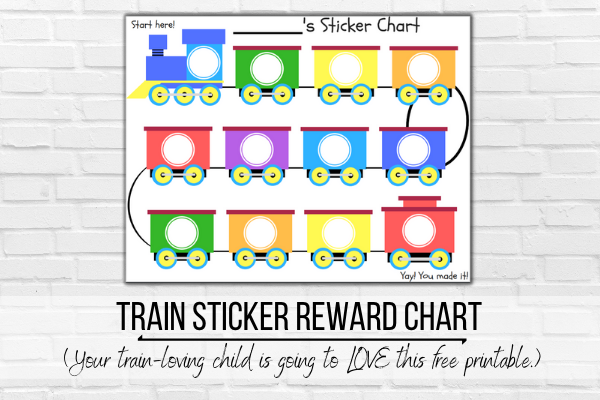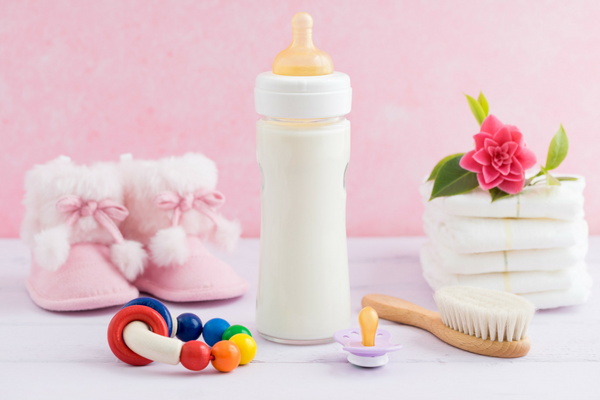In this post, I’ll share lots of Lego tips for kids (some of which I’ve learned the hard way!) Maybe you’re thinking of buying your child their first set of Legos or maybe you already have a few sets for your kids. Either way, this post will provide helpful Lego tips to ensure their collection lasts for years; including ways to encourage creative play, tips for your Lego loving kiddo, and some tips so you don’t lose as many pieces. (It’s never fun looking for the super rare piece that your child is missing!)
Legos are a great toy for kids; they are applicable across a wide range of ages, they rarely break (never say never!) and they don’t require batteries. But if you haven’t bought or even played with Legos for a few years, then your Lego building skills and knowledge may be a little rusty.
Because my household is currently obsessed with Legos, I thought I’d share some of the Lego tips for kids we’ve developed in our household.
For your convenience, this post contains affiliate links from Amazon.com. This means that if you click on a link and make a purchase, I make a small profit at no additional charge to you. You can read my full disclosure policy here.
lego tip #1: Classic Bricks versus lego Sets
It is useful to have both Classic bricks and Lego sets, depending on the age of your child. I would suggest starting with a classic Lego brick set that has a variety of bricks because it will allow your child to build things using their imagination, while also giving them a chance to understand how to put them together. (There are books that can help give them ideas, see Lego Tip #13.
With Lego “sets” (where you build a certain structure), your child will learn to follow instructions, develop spatial reasoning skills, and will learn to focus for longer amounts of time.
One reason for having a box of random Lego pieces (aka Classic bricks) is so that you have a place to dig for the missing piece that your child lost in their Lego set. There’s always one piece missing…..
Lego Tip #2: You can buy Legos used. (I do!)
Legos are a timeless toy, they rarely break (I’d say never, but I did see one Lego staircase break), and they don’t require batteries. Legos are one of the most durable toys that probably exists. (If you don’t believe me, step on a brick. Let me know who wins.)
(If you’re worried about germs, check out Lego Tip #4).
I would strongly recommend checking out Facebook Marketplace for Lego sets. Sometimes people are selling brand new, never opened boxes of Legos because they bought them on sale or their child never played with them. Sometimes Grandma is selling the set that her grandkids played with.
Especially if you are looking to buy a “classic” playset (aka tub of random Lego pieces), I think it’s worth buying them used. A good price for “Classic” legos (a random set) is between $6-$12 a pound (sounds funny, but it seems to be common knowledge!)
If you buy a certain set (like a racecar), ask if it includes the instructions and if all pieces are accounted for. If the person selling it says the set is new, confirm that new means the bags are unopened.

Lego Tip #3: You can introduce Lego Duplo as young as 18 months old and keep them in the playroom for years and years.
Lego Duplo are Legos that are safe for little kids (not to be confused with Mega Blox – not made by Lego!) You can buy Lego Duplo either as a set of random pieces or as a set that builds something specific (like the images above).
My kids are currently 4 and 6 years old, but they still play with their Duplo blocks all the time. We acquired a very large random set of Lego Duplos on Facebook marketplace a few years back.
Duplo blocks can be used differently than traditional Legos, because you can build bigger structures (easily 6-12 inches tall). My kids use their Duplos to build tunnels for toy trains or build larger structures for other toys.
Additionally, Lego Duplos are large enough that they can be played with outside.
In the summer, my kids love taking their Duplos to the front porch and using them with chalk to build a city.
Lego Tip #4: You can wash Legos!
If you are a germophobe, I have good and bad news for you. The good new is that YES – you can wash Legos! The bad news is that it’s not super easy.
According to Lego’s website, they recommend washing them with a gentle detergent in water no hotter than 104 degrees Fahrenheit, using a soft cloth or sponge.
I have seen posts going around about washing your Legos in the dishwasher or washing machine. Lego’s website clearly advises against this, saying that it could cause the pieces to distort, and then they won’t stick together.
Lego Tip #5: build multiple things with 3-in-1 lego creator sets.
When my 5 year old was getting into Legos, I wanted to buy him Legos sets that would allow him to build more than one thing.
If you are looking for a Lego set that provides instructions for more than one target, you need a 3-in-1 Creator set. FYI, not all Lego Creator sets are 3-in-1.
Lego Tip #6: while building, keep the legos on a cookie sheet or containers.
When your younger kids start playing with Lego sets (with instructions to follow), it’s best to keep the Lego pieces on a cookie tray or some kind of container. Without the tray/containers, it’s easy to lose Legos off the side of the table without your knowledge.
It’s never fun searching for the lost “rare” Lego piece that your kid is missing.

Lego Tip #7: the best ways to put lego sets away.
After your child has assembled their Lego set (let’s say the Lego Ferrari mentioned above), now it’s time for you to put it away.
If you want to keep their Lego collection well maintained, you may want to inventory their pieces. You can do this by looking at the back of the instruction book. We typically do this for smaller sets (less than 300 pieces).
I will typically disassemble their creation onto a cookie tray and then use the inventory in the back of the instruction booklet to make sure all pieces are there. We store the pieces in a freezer ziplock and put it back in the box with the instructions.
If the Lego set is larger (especially 1000+ pieces), you have three options.
The first choice is just to disassemble it and put it all into a big ziplock bag. The downfall to this option is that when your child goes to build the set, you’ll dump out the 1000+ pieces. It will be challenging for your child to find the right one. (If you use this approach, we’ve found it’s best to separate the pieces by color into various Tupperware containers, so it’s easier to find pieces.)
The second option is that you disassemble the larger set in fragments and put each fragment away in its own labelled bag.
For example, we have a Harry Potter train set. So we disassemble the station first and put it into a ziplock bag, the engine into a second bag, the next car into a third bag, and the passenger car into a fourth bag. This makes assembling it a little easier, as you never have quite so many pieces out at once.
The last choice is to meticulously dissemble their creation back into the original numbered bags (as if it was new) by following the instructions in the reverse direction. For example, start at the back of the instruction book and disassemble it piece by piece into numbered bags. (This takes a LOT of time! Don’t ask me how I know!)
Lego Tip #8: there’s a tool for taking the stubborn legos apart.
There’s a nifty Lego tool that you can use to get stubborn Legos apart. The big Lego sets often include them but if not, you can buy one here.

Lego Tip #9: If you’re missing pieces from a set, it is affordable to replace them.
You can easily order replacement parts on Lego’s website. It is easiest to do this if you have the part number from the instruction booklet for the piece you are missing. Pieces start around $0.10 each.
(I suggest having a set of random Legos – preferably from Facebook martetplace. This way you have a bin full of random pieces to look for substitutions or replacements for the lost pieces).
Lego Tip #10: If you need new instructions for a set, you can find them on lego’s website.
If you’ve lost your instruction book (or it is damaged), unfortunately Lego does not provide the option to purchase additional instruction books. They do however offer the PDF of instruction booklets.
(We have found that some of these don’t print out well.)
Lego Tip #11: As you acquire a larger Lego collection, you might consider having a lost and found bin.
As your child’s Lego collection gets larger, you might consider having a tupperware container for the random pieces you find around the house.
If you throw the random pieces you find on the floor into your big lego bin (full of random pieces), it will be much harder to find when your child tells you that they are missing a piece to their Ferrari.
(We just label it “random legos” and have it setting on the table where we build Legos. If a piece is missing, that is the first place we look for it.)

Lego Tip #12: Even if your child is younger than the suggested age on the lego box, they may still be able to build the set.
Just because the box says 8+ doesn’t mean your 5 year old child won’t be able to build it. I’ve found that my young children (currently ages 4 and 6) can build sets that are targeted towards older children (even ones as old as 16+), but they may just need more help.
I think the biggest challenge in building the sets targeted to older children is the larger amounts of small pieces. It makes it harder to keep track of all them, which I think is more of a matter of maturity instead of ability. (My children can build them but don’t seem to grasp the concept of how serious it is if they lose a rare piece off of it).
Besides if you do find that your child is unable to build a Lego set yet, simply put it away for awhile. It’s not going to “go bad” or stop working anymore.
Lego Tip #13: There are books that provide lego ideas for free play.
If your child struggles to come up with ideas for building things with Legos, they may benefit from a Lego book that has ideas. I want to be clear that I have not found a book that inclues instructions with how to build the structures in the book, but are more made to serve as a means to give them ideas.
My favorite Lego book to help spark my child’s imagination is the Legos Idea book (pictured below). I want to be clear that this book does not include step by step instructions with how to build the structures and simply is made to give your child ideas of what to build. Instead of buying it, I’ve simply checked it out from the library.
If your child would benefit from step-by-step instructions, try the Build It series. Most structures can be made using a classic set of Legos.
Lego Tip #14: To make taking legos on car rides easier, get a teebee box.
A Teebee box is a little “tackle box” for kids. The box is made to fit between your kid’s legs and opens up to have a main compartment (which amongst other things can be used for Legos), has a tray that flips out, and then has two “lids” that open into functioning compartments. One of the lids has a Lego plate attached to it.
I think classic lego bricks are the best choice for car rides, because I don’t want to lose pieces to a set of Legos (I already have a hard enough time keeping track of the pieces, losing them down the crack of the carseats sounds a challenge I don’t want to face.
This is also great way to take Legos on airplane rides, to restaurants, or anywhere you child may need to be entertained (and they are screen free!)
For more screen free activities for kids, check out this post.

Lego Tip #15: lego creationary is a great game for lego lovers.
Lego Creationary is a game that is similar to Pictionary. The game comes with a bunch of Legos and instead of drawing the object that people are supposed to guess, you have to build the object out of Legos.
The game is no longer being manufactured, but I’ve found several on Facebook Marketplace. (A link to Amazon is shown below, but you can find it for significantly less second-hand. I would aim to pay around $20).
It’s a great game for parties (for both kids and adults). It’s super fun and comes with a great variety of bricks.

Lego Tip #16: lego advent calendars are great for lego lovers.
There are a number of Lego advent calendars that will give your child something small to build the 24 days before Christmas. There are a variety of themes available for these calendars, including Lego Harry Potter.
I would suggest buying one in November, as they can be hard to find in December.

Conclusions:
Legos are SUCH a great toy that can provide hours of entertainment. They offer great several great advanges, as they require no batteries, don’t go bad, can be washed, can improve your child’s fine motor, can increase their imagination, and can be passed down to the next generation of kids in your family.
I hope the Lego tips in the post is helpful in building and maintaining your child’s Lego collection.
What are your best Lego tips? Share them below!
Stay savvy,


Wish your day-to-day was less chaotic?
The journey to a less stressful household starts with a single step. Getting all your login information organized is a GREAT first step. (Seriously – don’t underestimate the power of this small task!)
Sign up for this FREE challenge to get an eBook to guide you through this process and the worksheet that will whip your login information into shape!















